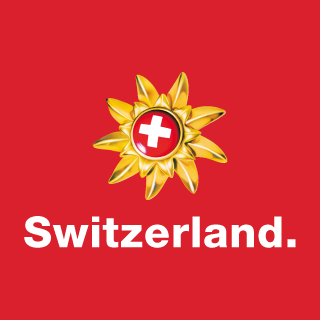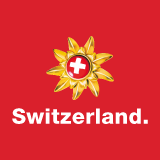World War II
Before and during World War II, Switzerland's main goal was to preserve its independence and to stay out of the fighting.
The outbreak of World War II
To face the threat of invasion Switzerland increased defence spending, extended the training of recruits and built defence works.In March 1939 reserves were called up to guard the border with Germany. The population were told to stockpile food, and given instructions about how to prepare their houses in case of air raids. Also, the "Anbauschlacht" was instituted, with every available piece of land being turned into farmland (mainly for the cultivation of potatoes) in order to ensure food supplies.
Henri Guisan was appointed Commander-in-Chief of the Swiss Army with the rank of general – a rank which exists in Switzerland only at times of war.
Plans were made for a "redoubt" in the Alps, from which resistance would be organised should there be an invasion. It was hoped that even if most of Switzerland came under Nazi occupation, the redoubt would remain impregnable. The threat was omnipresent throughout the war. Germany had annexed Austria in 1938. The fall of France to the Germans in June 1940 meant that for most of the war Switzerland was completely surrounded by Germany and its allies.
As a neutral state, its relations with all the warring parties were governed by the 1907 Hague Convention, which permitted neutral countries to trade freely with all belligerents – and this included the export of arms. In many areas one can still see the concrete blocks which were built to prevent German tanks from entering. These tank traps are also known as "toblerones" since they look like the famous Swiss chocolates of the same name.
The Swiss population in World War II
Swiss radio broadcast weekly programmes by Jean-Rodolphe von Salis in German and René Payot in French, which were widely listened to in occupied Europe, where they had a significant impact on shaping people’s opinions. Most Swiss newspapers, German-language ones, sympathised with the Allies. Many church and other groups supported, as best they could, refugees from Nazi Germany and the occupied countries.One of the best known of these helpers is Paul Grüninger, police chief of Canton St Gallen, who enabled some 3,000 Jewish refugees to enter Switzerland. He was arrested because of this and only rehabilitated in 1995, long after his death.
Gerhart Riegner, a German Jew who fled to Switzerland in 1933, was one of the first to alert the world to Nazi plans for the mass extermination of Jews.
Among the population, support for Nazism was minimal. By 1939 the biggest party of the radical right, the National Front, had only 2,300 members. It was banned the following year.
For all this, the refugees were not welcomed with open arms – because of the difficult economic situation, there were many Swiss who were pleased about the arrival of more workers.
Refugee policy
Under the terms of the Hague Convention, soldiers of either of the warring sides who – for whatever reason – took refuge in a neutral country were interned and their movements strictly controlled. These internees were generally set to work either on farms or on building projects, where they replaced the Swiss men who had been mobilised. In all, Switzerland accepted more than 100,000 military personnel during the war period. The first major group were French and Polish troops who fled across the border when France fell in June 1940; others were escaped POWs, deserters, or wounded army personnel.After the Nazis seized power in Germany and up to the autumn of 1933, some 2,000 refugees (mainly Jews and intellectuals) fled from Germany to Switzerland, and by the end of 1938 there were already 10,000 of such refugees.
Overall, Switzerland took in over 180,000 civilian refugees, of which 55,018 were adult civilian refugees, 59,785 children spending some time in Switzerland for recuperation, and 66,549 so-called frontier refugees who briefly resided in Switzerland.
At precisely the time when Germany started deporting the Jews from France (August 1942), Switzerland announced that it was closing the borders. This sparked violent protests across the country and hence the government modified its decision somewhat (with sick people, pregnant women, the elderly over 65, and children now not being refused).
The situation of the workers
During the 1920s and 1930s the trade unions changed their tactics and moved away from the idea of class struggle and towards cooperation with the farmers and middle classes.An important labour relations milestone was reached in 1937, when four unions in the metal working industry signed a so-called peace accord with employers under which the two sides agreed to negotiate when they had disputes, rather than resort to strikes and lock-outs.
In a further advance, during the Second World War, unlike the First, men who were mobilised received compensation payments for loss of earnings – a system which laid the foundation for the system of social benefits in force today.
The economy in World War II
The 1907 Hague Convention permits neutral states to trade freely with the belligerents in time of war, including the sale of arms.Before the war, Germany was one of Switzerland’s most important trading partners. From 1939 to 1944 export figures to Germany rose sharply. Trade with the Allies only amounted to one third of that with Germany.
From 1940 to1942, 45% of all exports went to the two Axis powers (Germany and Italy). The main export items were machinery, iron and steel goods, tools and appliances, vehicles and chemicals, i.e. goods which at least in part could be used for warfare.
However, Switzerland also imported goods from Germany. These included coal, petroleum products and raw materials for the factories and food – items which otherwise could have been used for the German war effort.
Each of the warring sides was informed about Switzerland's trade with the other and consented to it.
Lines of communication with the Allies were restored when US forces reached the Swiss border in 1944. Switzerland then began to reduce its trade with Germany, but continued to permit the transport of non-military freight on its territory to and from Italy.
As a neutral financial centre, Switzerland did business with the Allies and with the Axis powers. E.g. both sides sold gold to Switzerland.
From today's perspective
Certain members of the government and other highly-placed Swiss officials have been accused of being defeatist at best, and Nazi sympathisers at worst.Around 1938, the chief of the aliens police, Heinrich Rothmund, welcomed the addition of the "J" stamp on the passports of German Jews, so that “the Jews could be distinguished from other Germans”. Rothmund maintained that he did not want Switzerland to be "swamped" by people unable to assimilate to the Swiss way of life. At the same time, he categorically rejected the Nazis' treatment of the Jews.
Official Swiss behaviour during the World War II has been criticised. This includes the way in which many Jewish refugees were refused entry into Switzerland. Switzerland is also accused of having bought Jewish gold, which was stolen by the Nazis. It has also been accused of refusing to hand back assets deposited in Swiss banks for safekeeping by investors who died during the war, and of helping prolong the war by supplying war material to Germany.
All these allegations were investigated at the end of the 20th century by a commission headed by the historian François Bergier. In its report, published in 2002, the Bergier Commission concluded that Switzerland not only refused many thousands of Jews entry into Switzerland, but also handed over some to the Germans. The report also confirmed the allegation that assets in the amount of several million of francs were declared dormant.
This report has been an important tool for a differentiated discussion about Switzerland’s conduct during the war. Before this discussion about the unclaimed assets, the issue had only been dealt with very superficially.
Related links
More about Swiss history

